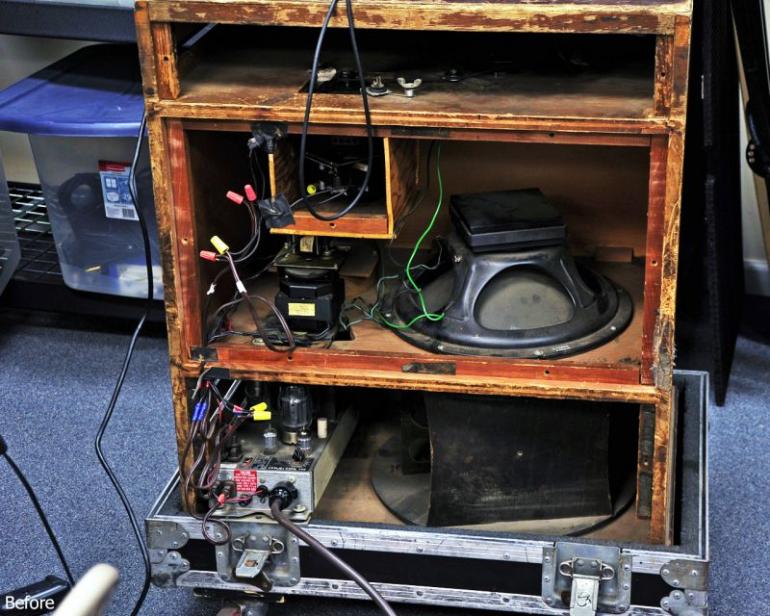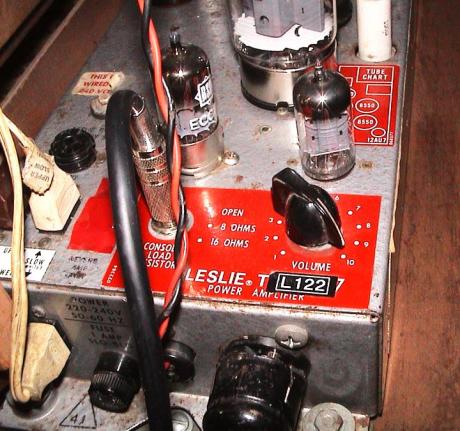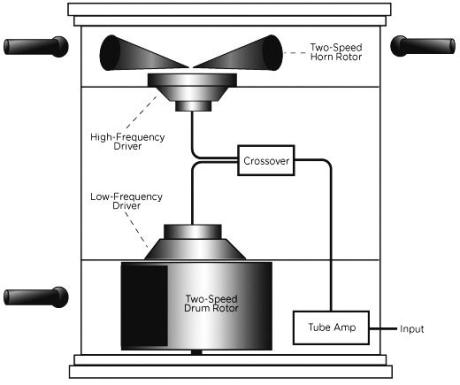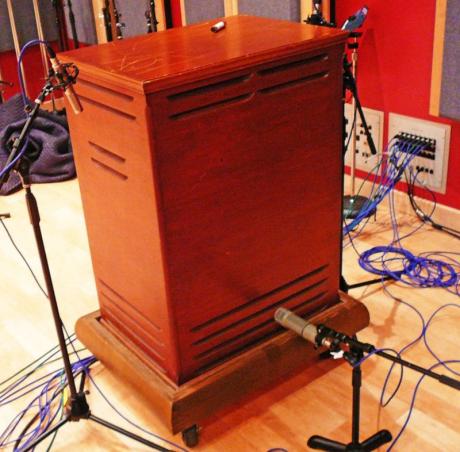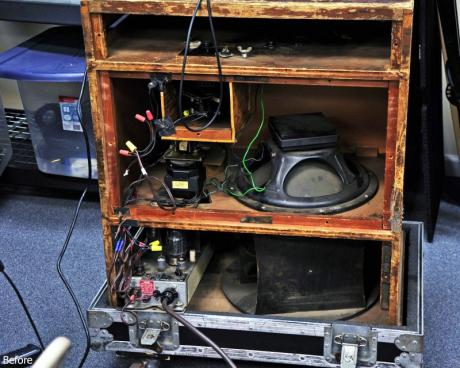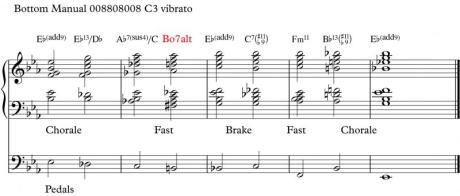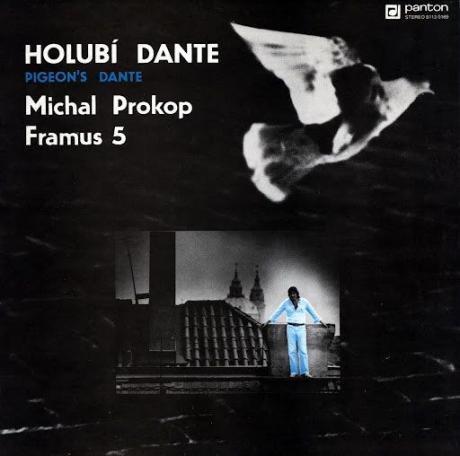Rock Organ XX - workshop
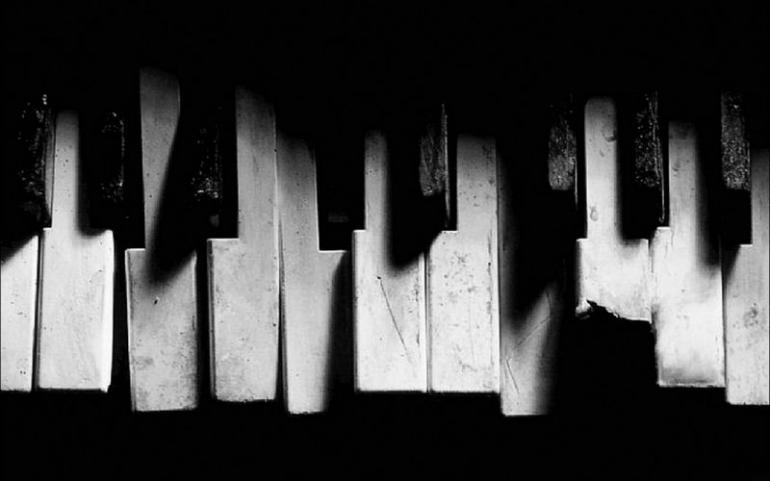
Leslie Speaker In Depth pt. 2
This month I would like to continue speaking about the almighty Leslie Speaker. Last month we covered the components and power structure, this month I want to touch on specific recording techniques and a few tricks. Before we dive in, you might want to check out this video. I've found it's the most comprehensive video on the Leslie speaker I have seen.
Leslie 122 overview:
Some people get really into designing their own Leslies too. There are many sites and youtube videos that will show you how. here's one:
Ex. 1) Unplug the White Plugs
Some Leslie speakers have a slow and fast setting on the switch but no middle position "brake" setting that is used by many jazz players. The chorale or slow setting produces a gentle chorus effect that some believe makes the bass sound less direct and punchy. I'm actually one of these people and usually put my leslie to brake or fast. One way around the problem of having no brake position on your switch is to unplug the slow motors. This means when the leslie switch goes to slow it will actually stop because there is now no electricity going to the slow motor. (See Image 1a) The Two white chords are very like American style lamp plugs. Gently wiggle each one back and forth as you pull it out. These can get pretty stuck from years of dirt so pull easily. Get pliers if you need. As you pull each one out you will see the corresponding motor stop. You might want to label which one is the top and which is the bottom. The bottom chord is usually longer. Now when the Leslie switch is turned to slow is will Brake. When switched to fast it will perform as before. Try this setting on a Jazz gig where you have to kick pedals
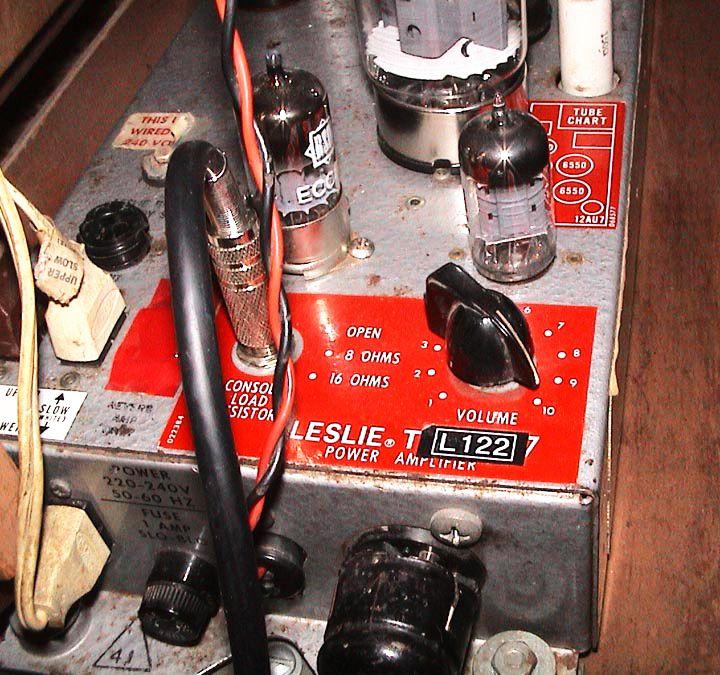
Ex 2) Standard Leslie Speaker Micing Techniques
In 1950's, recording engineers would put the Leslie in a small room with a ribbon mic about 6 feet above the Leslie. These days, a 3 miking technique has become popular. (See image 2a and 2b). For the top mics, place them on the side of the speaker. This is so the wind sound is not overpowering when the speakers are switched to fast. There is great debate as to which mics are best for the tops. Live, you can't go wrong with Shure SM 58s. In the studio, many engineers like old tube mikes like a Neuman U67s. For a more modern sound, AKG 414s are nice. For the bottom rotor, use a mic that is good for bass drums and low frequencies like a Shure Beta52a.
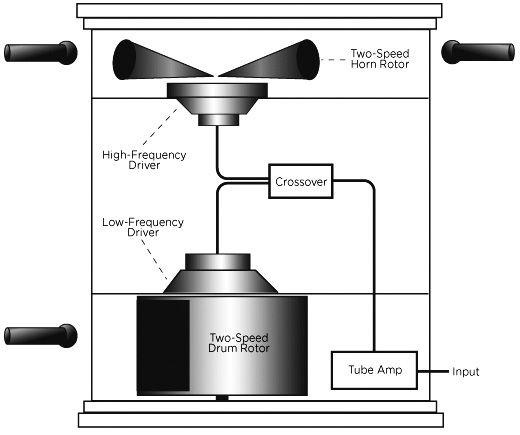
This is a great article for micing the Leslie:
http://blog.shure.com/miking-the-legendary-leslie-tone-cabinet/
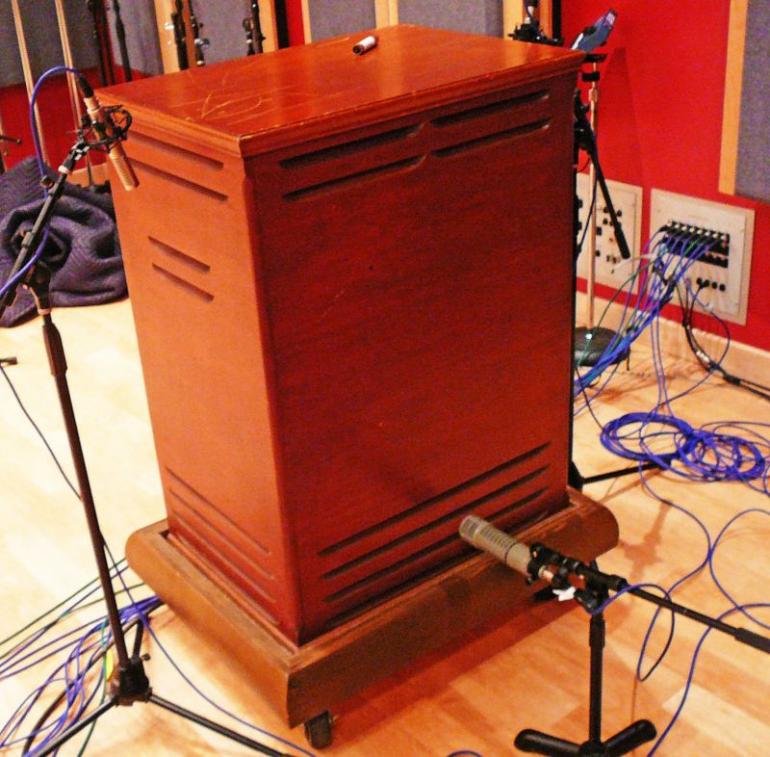
3.) Preacher Chords
This is a practical excercise for all of you so you can put all of these concepts we've been talking about to use. Let's look at excercise 3 through the glasses of a Gospel Church organist. No one can make the Hammond B3 sing like a great gospel organist. There are lots of great free instructional videos on youtube about gospel organ playing and I highly recomend checking them out. It's the best way to really understand the power of the Leslie Speaker.
Listen to how beautifully Cory Henry plays:
Gospel organists will often play really dense two handed chords on the lower manual while saving the top manual for shouts. The bass is mostly played with the feet. In example 3 I've given you a progression of some interesting chords with a contrapuntal bassline to be played in the feet. Notice how we can grab so many interesting chord extensions when both of our hands free. In bar one we add an F to the Eb chord for a very sweet sound. As the excercise progresses, our color tones get more dissonant. Notice how we try to double only a few notes between the hands for more interesting colors. In Bar 2 Beat 3 we have what is called a double diminished chord. This means putting diminished chords a 1/2 step away on top of each other. In this case Bo7 on top of F#o7 with a B in the bass. Bar 3 Beat 3 has an interesting voicing too. On top of a Go7 voicing in the left hand we place an Eb minor triad yielding the interesting tensions on a C7 chord; #11 and b9. Another version of this chord a step down occurs on beat 3 of the next measure before arriving at a sanctified (means holy or spiritual) Tonic chord with our sweet F note for color. Listen to the enclosed audio example. You can hear me taking my hand off the bottom chords quickly to switch the Leslie to the different speeds.
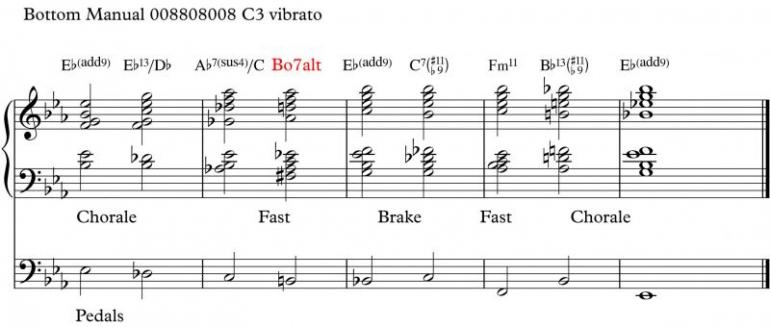
4.) 122 vs 147
The Leslie models usually considered to be the perfect match for a Hammond B3 are the 122 and 147. The 147 is usually smaller and quieter than the 122 but there are exceptions with custom models.The 147 is considered a little brighter sounding because of it's speed switching circuitry. There is also a noisier click sound when the speed is changed than on a 122. Image 4a has a picture of a 147. Notice that it's a little shorter than it's big brother. Here's another important difference, The 122 has a balanced input, and is designed to mate directly with the balanced outputs of the Hammond console preamp. A 147 has an unbalanced input and can be used with any brand of organ besides a Hammond.The 122 also has a slightly longer delay before responding to speed changes. This is because the DC signal discharges through a capacitor to go through the relay a second time.
